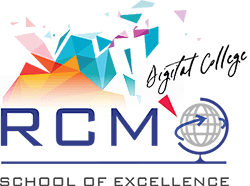It is extremely important for a facilitator and/or educational institution to understand and educate themselves about the various learning styles of their students to ensure that they have learning material that supports every individual’s needs. Every student is unique in their learning style and understanding this concept will help the student understand the learning material.
The different types of learning styles.
There are different learning styles, namely: visual learners, auditory learners and kinesthetic learners. Understanding these learning styles will help you as a student better understand your needs and it will help facilitators and educational institutions better understand how to adapt their material to improve on their facilitation skills.
VAK learning styles.
VAK stands for the three types of learning styles: visual, auditory and kinesthetic. The VAK concept was developed in the early 1900s, to be precise it was developed in 1920. This concept was developed to learn more about the most common learning styles, they identified the VAK concept as the three most common learning styles.
Visual learners.
A learner who has adopted the visual style of learning relies heavily on visual material, this can be in the form of infographics, slide shows, video content, charts, diagrams, graphs and pictures. The visual learner will absorb and retain information easier if the material is presented to them.
Auditory learners.
A learner who has adopted the auditory style of learning relies heavily on audio content, this can be in the form of group discussions, facilitators who explain the material, debates or in the form of tutoring. They will absorb and retain information easier by listening to what is being presented. When they hear their own voice repeating what is being taught it assists them in the learning process i.e. verbally repeating what has been taught. A facilitator who constantly asks questions for this type of learner to answer is a great method of learning.
Kinesthetic learners.
A learner who has adapted the kinesthetic learning style relies on physical experiences, this can be in the form of using a prop to understand, validation through touch or a pat on the back, practical/” hands-on” activities, and feeling or dissecting an object or conducting an experiment.
An adaption of the VAK concept.
A variation of the concept was developed in New Zealand by a teacher by the name of Neil D Fleming. He added an additional learning style known as the reading/writing style of learning.
Reading/writing learning style.
A learner who has adapted the reading/writing learning style relies on the repetition of words and writing. This type of learner has developed a combination of two of the most common learning styles: visual and auditory. They are defined as individuals who remember or organize things better in their minds when they are taking notes.
How to better understand the various learning styles.
Asa learner you should already have a pretty good understanding of what your preferred learning style is.
Think about this- when a problem presents itself do you sketch something on a piece of paper? Do you talk about it? Or do you build a model or a tangible presentation of the product? If you are someone who sketches the problem then you are a visual learner, if you are someone who talks about the problem then you are an auditory learner and if you are a learner who creates a prototype of the problem then you are a kinesthetic learner.
If you are still unsure of the learning style that you have adapted, think about these scenarios:
Scenario 1: Think about how you complain. Usually when you have something to complain about your emotions are usually heightened. You will complain about using the learning style that you as an individual have adapted. Whilst you are complaining do you focus on the whites of the eyes who is receiving the complaint (visual), do you use your phone to call up a friend to complain (auditory), do you physically deal with your frustrations by screaming into a pillow or hammering your fists into something (kinesthetic), or do you write an angry text or email (reading/writing)?
Scenario 2: Think about a situation where you have ever felt uncomfortable. If, for example, you were lost in a foreign country or street, how would you find your way? Would you use a map (visual), would you ask a stranger for directions (auditory), or would you keep walking until you find your way (kinesthetic)?
Scenario 3: When learning material is presented to you which format do you prefer? Was it charts and visual aids (visual), the words that were spoken by the facilitator (auditory), or the participation by the audience that was facilitated by the presenter (kinesthetic)?
Write down the answers to these questions, the learning style that has surfaced the most is your preferred style of learning, be aware of what you prefer and ensure that you have this material available to you to ensure that your needs as a student are being met.
How to improve your skills as an educator/facilitator.
As an educator, it is important to educate yourself about the various learning styles and needs for your students to ensure that you are giving them the full benefit of an education. Understanding the VAK concept is simple and easy to implement within your training environment. It is important to note that when you are conducting your training sessions, that you have a variety of learning aids to ensure that you are catering to every learning style as explained in the VAK concept, make an effort to engage your learners and keep them interested in the learning material that you are presenting.
The VAK concept, although helpful, also has its downfalls. We all understand that we are different in many ways and therefore the best way to teach is to tailor-make your courses to the individual needs of your students. There are other variables that also play a part in the learning ability of the student; variables such as learning disabilities, or other disabilities that the student may not be aware of such as bad eyesight or poor hearing, the student may also find it difficult to concentrate because perhaps they are ADD or ADHD- these are all reasons as to why it is important to know and understand your audience.
How to implement the VAK concept.
Auditory learners- you often find these students talking to themselves because they absorb information better by hearing the sound of their own voice, they also mime words or read out loud.
How to accommodate the auditory learner.
- Start new modules or material by giving a brief explanation or overview of what you are presenting and conclude with a summary of what you have taught. An opening question with a closing conclusion will resonate with the auditory learner.
- Question your students, request as much information as possible and reconcile the information by adding additional information about the learning material that they may have left out.
- Include activities which stimulate the auditory learner; use learning material such as quizzes.
- Request that the learners verbally ask their questions and voice their concerns rather than them write it down on a piece of paper or via an email.
- Develop an internal dialogue between you and the student.
Visual learners- there are two types of visual learners, namely: linguistic and spatial. Visual-linguistic learners respond more to the written word. They absorb more information when they are reading or writing. Visual-spatial learners usually find reading and writing a difficult method of absorbing information, they respond better with visual aids such as infographics, diagrams, charts, graphs, videos and slide shows. They absorb more information when they can visualize it.
How to accommodate the visual learner.
- Use visual aids when you are training.
- For the visual-linguistic; learner offer handouts, brainstorming maps, and outlines of the material so that they can read the material and take notes. Keep spaces in between the material that you hand out so that they have a place to write their notes. Emphasize keywords to notify the student to take notes of what is being said.
- For the visual-spatial learner; encourage them to draw pictures in the margins to stimulate learning. Another good method to adopt is to encourage the learners to visualize the topic so that they can paint their own picture and better absorb information through visualization. Use illustrations rather than text to convey information.
Kinesthetic learners- There are two types of kinesthetic learners; namely: kinesthetic which refers to movement and tactile which refers to touch. You will lose the attention of a kinesthetic learner if there is a lack of external stimulation. For example, kinesthetic learners may want to take notes during a training session in order to move their hands, before reading a paragraph they may scan through the material first, they also enjoy using coloured highlighters, drawing diagrams & illustrations and doodling.
How to accommodate the kinesthetic learner.
- Use ice-breaking techniques or activities to encourage the learners to be active and move around.
- Play music to stimulate their learning environments.
- Provide the students with stationery such as different coloured pens, papers and highlighters because of this aids learning.
- Allow the students enough breaks to ensure that their minds stay active and awake. We would recommend a fifteen-minute break after a forty-five-minute training session and of course refreshment breaks.
- Instruct the students to transfer information to another source such as to a computer or tablet.
- When writing on the board on the flip chart use different coloured markers.
The RCM School of Excellence.
The RCM School of Excellence understands the difference between the different learning styles and we do our best to accommodate the visual, auditory, and kinesthetic learner.
The RCM School of Excellence is a digital college which focuses on digital skills primarily focused on digital marketing, web design, web development, animation and mobile application development. The digital college is fully accredited locally and internationally. The RCM School of Excellence offers online and fulltime courses as well as short courses for those who are interested in upskilling.
The online courses that are offered by this digital marketing college are recognized internationally as professional diplomas. The online package is inclusive of a textbook, video content, practical exercises, and slideshows; making this course a flexible choice for any learning style. The price of the course includes examination fees, administrative fees, access to on-going assistance from the student advisor and facilitators, all of the study material and the accreditation fee. What’s more? The professional diploma can be completed within six months!
The full-time courses that are offered by this digital college are recognized locally by the MICT Seta and the ICITP as a diploma qualification. The full-time courses are inclusive of a fully trained facilitator with a wealth of knowledge who presents the study material, moderation fees, assessment fees, accreditation fees, textbooks, full access to a computer that has the software that you will need to complete the course, registration fees, examination fees, and full access to a student advisor for on-going assistance. The facilitators are skilled in the field of digital and have completed ‘train-the-trainer’ courses which help them identify the needs of the individual learner. Their lesson plans are designed to cater to every students’ needs and of course their preferred style of learning. Full-time courses also offer a very unique practical component whereby the students are encouraged to work on client campaigns that are fed from the digital agency, Right Click Media, this unique practical component better prepares the student for the working environment.
Looking for the perfect college that addresses your needs as a student? Contact the RCM School of Excellence.
Check out our awesome website for all you need to know: www.schoolofexcellence.co.za. Give us a call on 011 867 6380 or send us an email info@schoolofexcellence.co.za and a student advisor will be happy to assist.

